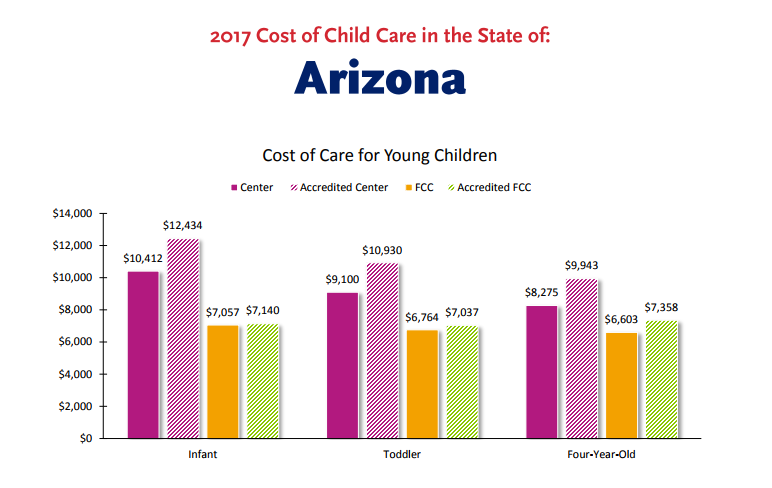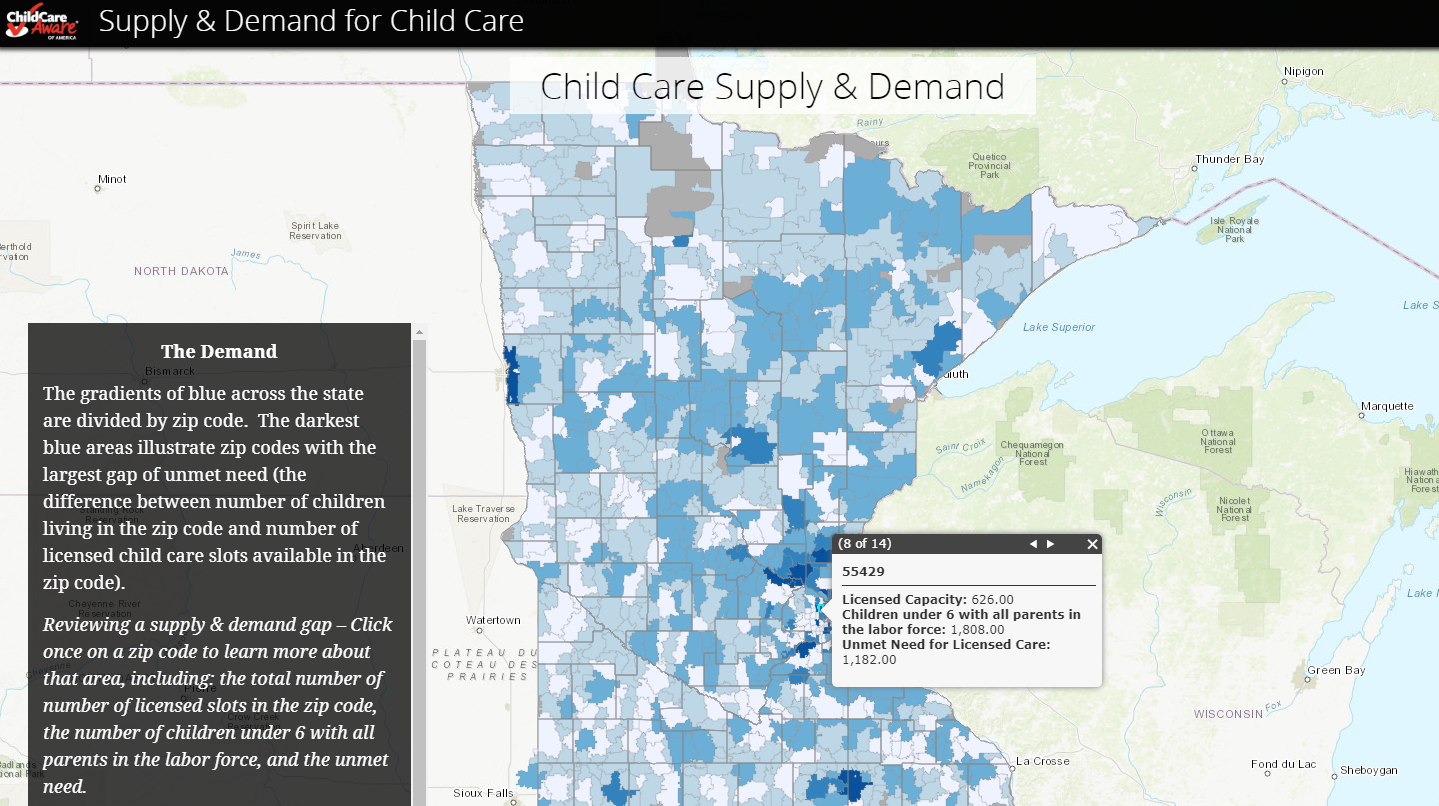
Share On Social!
States are not keeping up with shifting demographics to meet family’s child care needs.
Every year since 2006, Child Care Aware® of America has published a set of state fact sheets to illustrate how states measure up on areas of quality, affordability, and access to child care.
Across all 50 states, the cost of center-based infant care averaged more than 40% of the median income for single mothers, far higher than the 7% threshold established by the U.S. Department of Health and Human Services, according to Child Care Aware® of America.
In 2015, 42% of all households with children under the age of 18 include mothers who are either the sole or primary source of income for the family.
Latina mothers are more likely than white mothers to be the breadwinners, but they make lower wages. Latinas only earn 54% of what white men earned, compared to white women who earn 75%, according to a report from Center for American Progress.
Quality, affordable and accessible child care is essential to give Latino families and single Latina mothers a chance to get out of poverty.
Quality child care is also essential because children’s experiences in the first five years of life set the stage for lifelong learning and health, and the child care setting is one in which early childhood education is already occurring. When Latino kids don’t have access to quality early care and education, they start kindergarten behind their white peers and face health disparities throughout adulthood, according to a research review from Salud America!.
State Child Care Fact Sheets
The 2017 State Fact Sheets provides: data on infants, toddlers, and young children; the supply of child care; the cost of child care; the child care workforce; services provided by and the role of Child Care Resource and Referral agencies in each state; and participation in state initiatives for quality, health and wellness, family engagement, and emergency preparation.
 For example:
For example:
- In Alabama, the average annual income a childcare care worker is $18,810.
- In Arizona, only 11% of licensed spaces in child care programs are for toddlers.
- In California, there are 706,333 single working mothers.
- In Colorado, young children care centers cost $15,138 annually.
- In Florida, there are 286,782 children age birth to 4 years living in poverty.
- In Nevada, cost of infant care is $12,584 for an accredited center and $8,655 for an accredited family care center.
- In New Mexico, the cost of before-/after-school care for school age children is $4,004.
- In Texas, there are 1,345,519 children under age 6 potentially needing child care.
Nationwide, over two million people work in the early childhood workforce caring for nearly 15 million children under 6. Yet, due to low wages and costly child care, many workers in child care centers cannot afford to enroll their own children in child care.
Federal assistance through the Child Care and Development Block Grant (CCDBG) helps low-income families by offsetting the cost of child care, and helps states raise the quality of child care programs and improve affordability and accessibility. However, estimates suggest that only 15% of the nearly 15 million children eligible for subsides through CCDBG receive the subsidies, and CCDBG funding has not kept pace with inflation, increased demand, or demographic shifts.
For every $1 spent expanding early learning, society receives a return on investment of $7 or more based on increased school and career achievement, as well as reduced costs in remedial education, health, social welfare programs, and criminal justice system expenditures. Additionally, investing in higher quality child care results in a 13% return on that investment, per child, per year.
Learn more about how your state measures up and how critical expanding CCDBG funding is to improve quality, affordability and accessibility.
You can dig deeper in into some state’s stories of supply and demand in Mapping the Gap™: Examining Child Care Supply and Demand Across the Country.
Mapping the Gap™
 Child Care Aware® of America is also working with several states to take a deeper look at child care supply and demand in order to tell their unique stories via customized maps.
Child Care Aware® of America is also working with several states to take a deeper look at child care supply and demand in order to tell their unique stories via customized maps.
Mapping the Gap™: Examining Child Care Supply and Demand Across the Country currently offers interactive story maps and report briefs for Alaska, Massachusetts, Minnesota, and New Hampshire.
Spread the word and keep checking back as Child Care Aware® adds more state story maps throughout the year.
Learn more about issues facing families who are not adequately supported by the current child care system in Child Care Aware® 2016 white paper, Child Care Deserts: Developing Solutions to Child Care Supply and Demand. This white paper explores the concepts of child care supply and demand from both the perspectives of 1) parental choices and decisions made related to finding quality child care, and 2) state- and community-level approaches to documenting and addressing child care deserts.
By The Numbers
84
percent
of Latino parents support public funding for afterschool programs



